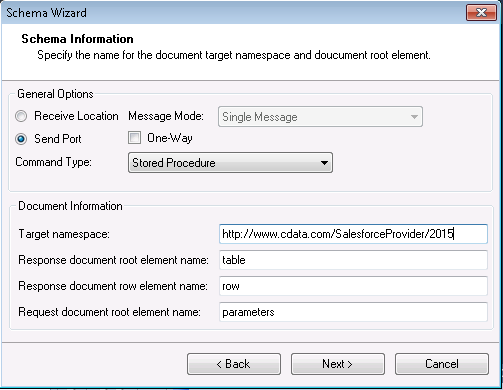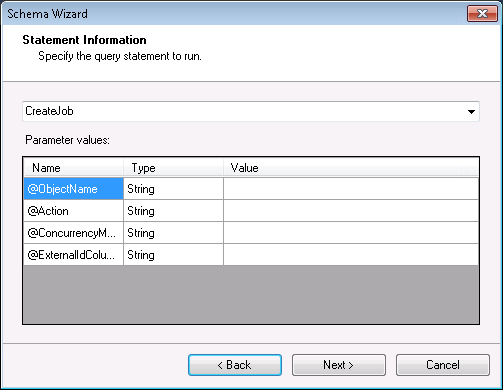Discover how a bimodal integration strategy can address the major data management challenges facing your organization today.
Get the Report →Execute Stored Procedures to HCL Domino in BizTalk
You can use stored procedures provided by the CData BizTalk Adapter for HCL Domino to automate working with HCL Domino data in BizTalk. Stored procedures implement actions available in the underlying API.
Stored procedures implement HCL Domino actions that cannot be represented as SELECT, INSERT, UPDATE, and DELETE statements. This article shows how to generate a schema for a stored procedure. You can use the schema to execute the stored procedure from a send port.
Add the Adapter to Your Project
Use the Add Adapter wizard to add the adapter to a BizTalk Server project in Visual Studio. The adapter will return metadata about the inputs of the stored procedure and its results. This metadata is needed to create the schema.
- Right-click on the project in the Solution Explorer and click Add -> Add Generated Items.
- Select Add Adapter Metadata in the resulting dialog box.
- In the resulting Add Adapter wizard, select the adapter from the list.
- In the Port menu, leave the selection blank. Or, select a receive location or send port that has been configured to use the HCL Domino Adapter.
![CData Adapters in the Select Adapter wizard. (Salesforce is shown.)]()
On the Connection String page, enter authentication credentials and other connection properties if they were not already configured in the send port or the receive location.
Below is a typical connection string:
Server=https://domino.corp.com;Database=names.nsf;Port=3002;SSLClientCertType=PEMKEY_FILE;SSLClientCert=full_path_of_certificate.pem;SSLServerCert=*Prerequisites
The connector requires the Proton component to be installed. Normally, Proton is distributed as part of the AppDev pack. See the HCL documentation for instructions on acquiring and installing Proton or the AppDev pack.
Once the Proton service is installed and running, you will also need to create a user account and download its Internet certificate. This certificate can be used to set the connector certificate connection properties.
Authenticating to Domino
- Server: The name or IP address of the server running Domino with the Proton service.
- Port: The port number that the Proton service is listening on.
- Database: The name of the database file, including the .nsf extension.
- SSLClientCertType: This must match the format of the certificate file. Typically this will be either PEMKEY_FILE for .pem certificates or PFXFILE for .pfx certificates.
- SSLClientCert: The path to the certificate file.
- SSLServerCert: This can be set to (*) if you trust the server. This is usually the case, but if you want to perform SSL validation, you may provide a certificate or thumbprint instead. See the documentation for SSLServerCert for details.
Additional Server Configuration
The connector supports querying Domino views if any are defined. Before views can be queried by the connector they must be registered with the design catalog.
Please refer to the Catalog Administration section of the AppDev pack documentation for details on how to do this.
![The connection string properties used by the HCL Domino Adapter. (Salesforce is shown.)]()
Generate the Schema
After you enter connection properties in the Add Adapter wizard, the Schema wizard is displayed.
- On the next page, Schema Information, select the Send Port that you have configured to use the HCL Domino Adapter.
- If you have configured the CData HCL Domino Adapter in a solicit-response send port, disable the One-Way option.
- In the Command Type menu, select Stored Procedure.
![Schema options for a stored procedure. (Salesforce is shown.)]()
- Select the stored procedure from the menu and enter the values for the input parameters.
![Input parameters and values. (Salesforce is shown.)]()
- Confirm the settings in the summary displayed by the wizard and click Finish to generate the schema.xsd file.
Processing Schemas
To use schemas in a simple BizTalk application, see the tutorial.










